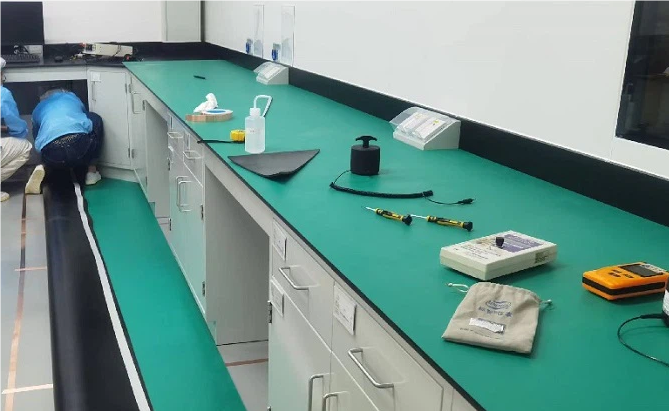
Whatsapp//Wechat: 86-13427954596
Facebook:
www.facebook.com/li.karen.184881
Email:
karen@kyd-esd.com
sales@kyd-esd.com
sales001@kyd-esd.com
When anti-static measures are provided for explosive and flammable hazardous chemicals such as explosive warehouses, why should anti-static rubber sheets that do not require hot work and their technical support be used as anti-static safety measures?
The main factors are as follows:
1. Preventing direct sources of danger from explosion or fire: Hot work may generate sparks, high temperatures or heat sources in real time, which is a common direct source of danger in flammable and explosive environments. Any spark or high-temperature heat source may cause an explosion or fire, so it is common sense to avoid hot work on site as much as possible.
2. The ability of anti-static rubber sheets to control static electricity accumulation and the safety of the laying process of non-hot work ensure construction safety: static electricity is a hidden source of danger in flammable and explosive environments, and many people are not aware of it. Anti-static rubber sheets and their safety technology support can effectively control the generation and accumulation of static electricity, and can effectively prevent hidden static electricity accumulation and discharge from causing fire or explosion risks. Moreover, during the process of hot work, there is a possibility of damaging the anti-static rubber sheet, so the use of non-hot work laying technology and supporting measures will help ensure the safety of on-site construction.
3. Leadership attention and compliance with safety regulations: The owner's leadership attaches great importance to safety and requires safety professionals to control and record project progress and processes according to relevant standards, especially to measure and record the nodes of hidden projects, so as to ensure the final results meet the standards, the long-term effectiveness of subsequent safety, and future verification and responsibility traceability.
Many safety regulations and standards explicitly prohibit hot work in flammable and explosive environments. Therefore, both safety and compliance process safety and result safety need to be followed and ensured.
